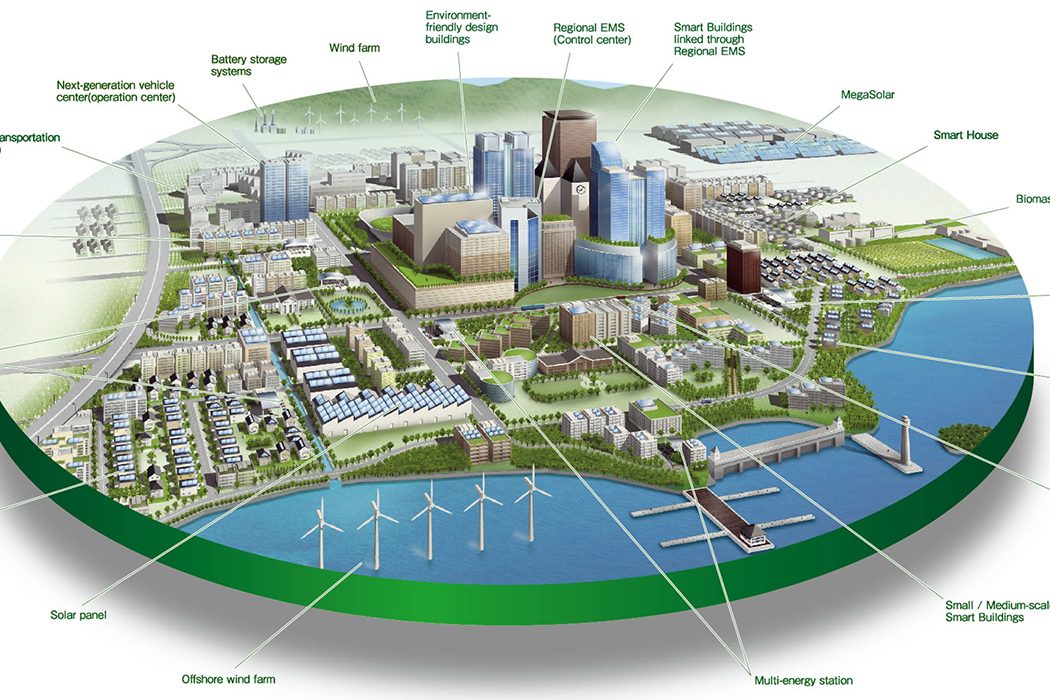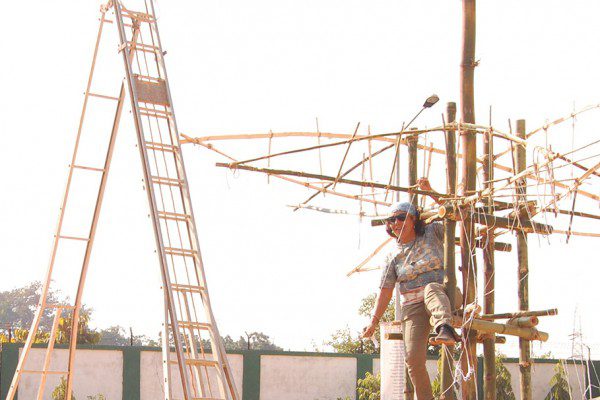How can you call a city smart if it cannot keep its citizens safe, asks Paramita Banerjee.
The Government of India has taken up the Smart Cities Mission, and 20 cities have qualified in the first round to be upgraded to “smart” cities. What makes a city “smart”? The official website of the Mission admits in its definition of a smart city that there is no universally accepted definition for this one. It is this acknowledgement that urged me to ponder about what makes a city “smart”—trying to channelise my thoughts towards finding one meaningful characteristic beginning with each letter of the word ‘smart’.
S for safety is obvious, I guess. Even to be considered for being a smart one, a city must ensure that all its residents feel safe there. Unfortunately, we have not left too many cities of the world as safe spaces for all its residents, children included. In fact, I’m not even sure if they ever were, but without getting into an analysis of the past, I just want to concentrate on the present. A snapshot that haunts me as I think “safety” is of a photo by “What the Pranks” shared on Facebook by a friend. The picture is that of a little girl with a terrified face, teary eyes and hands raised above her head. The caption reads: “When a photo journalist took this picture of a little girl in Syria, the 4-year old thought the camera is a gun and raised up her arms in surrender.” There is no way for me to know whether it was taken in a city or the suburbs or the countryside. But I do know that the civil war in Syria has not spared the country’s cities. Desperate refugees seeking asylum in the European Union countries are not from the countryside alone. Civilian casualties in this war have been a talking point for some time now—casualties in Syrian cities, too.
Too many wars have happened in recent times and are still happening in different parts of the globe, making these countries unsafe for their residents—including those in the cities. It is well nigh impossible to conceive of a safe city in these countries and without safety, a city isn’t smart. I’m thinking Kuwait City, Baghdad, Cairo, Damascus, Mogadishu, Tripoli and many more as I write this. Famous cities, yes, but unsafe—some of them even now—and unsmart therefore.
Even to be considered for being a smart one, a city must ensure that all its residents feel safe there. Unfortunately, we have not left too many cities of the world as safe spaces for all its residents, children included.
Brussels, Dhaka, Kabul, Lahore, Mumbai, New Delhi, New York, Paris and many other famous cities of the world also crowd my mind with horrifying scenes of unsuspecting people dying from what we have come to call “terror attacks”. Where is safety? A hunt for the terrorists starts every time such an attack takes place anywhere on the globe, but soul-searching introspection on the kind of global politics that allows such terrorism to develop and thrive is yet to engage politicians worldwide. Discussions till date are more focussed on the comparative responsibility of particular nations/governments/religions. Of course, most member states of the United Nations are “united” in their “fight against terror”, but this fight is not directed inwards to look for root causes; no radical questioning of the policies and patronisations in yesteryears by certain super powers of the world responsible for some of the Frankenstein’s monsters of our times. Many global cities are unsafe, therefore, if not all.
The thought of the United States of America comes to my mind in this connection, perhaps inevitably. And with that flashes news reports of individual gunners indulging in mass shooting, killing people at random—little kids in school included. Again, not just in suburbs and villages. As it happens, a report by Kate Abbey Lambertz[1] reported on 7 December 2015 that Austin was the only major US city that hasn’t recently had a mass shooting incident. Uncle Sam’s own land, belonging to the developed/high income/first world category—with enviable infrastructural and technological advancements—cannot boast of having smart cities, then, since there is no safety. True, President Barack Obama has argued profusely for gun control, but how is the country engaging in probing for what it is that allows such incidents to happen? What ails them that they have to shoot people down without rhyme or reason if one has a gun?
Narrowing down my gaze to the country whose citizen I am, this dismal feeling about the lack of safety in cities only intensifies. I have written about the concentration of crimes in Indian cities earlier[2] and do not want to repeat that bit. Let me talk of other kinds of safety—not related to what is defined as crimes in the Indian Penal Code. How safe are Indian cities in terms of accidental deaths, for example? The NCRB report entitled Accidental Deaths & Suicides in India 2014 (the latest available), lists 53 mega cities in the country, which have a population of one million or more as per the 2011 Census. According to this report, accidental deaths “attributable to forces of nature” reflect a 71.3 percent increase in 2014 in comparison to the previous year. We are contemplating “smart” cities when we haven’t even learnt to make at least our urban residents safe from natural disasters!
The NCRB report entitled Accidental Deaths & Suicides in India 2014 (the latest available), lists 53 mega cities in the country, which have a population of one million or more as per the 2011 Census. According to this report, accidental deaths “attributable to forces of nature” reflect a 71.3 percent increase in 2014 in comparison to the previous year.
Taking natural and unnatural causes together, accidental deaths in our 53 mega cities, at 47 percent, stand higher than the national rate of 36 percent in 2014. The highest rate for this year is reported from the city of Rajkot in our Prime Minister’s home state Gujarat—a whopping 179.1 per 100,000 population. The 53 mega cities together witnessed 75,511 accidental deaths in 2014, out of which only 4,504 were due to natural causes. A total of 43,433 (57.52 percent) deaths were due to unnatural causes, most of which refer to traffic accidents, while another 27,574 (36.52 percent) deaths were due to “other causes” that include heart attacks, poisoning, drowning, etc[3]. The stress of urban living in India becomes even starker when we note that the four metros of Bengaluru, Chennai, Delhi and Mumbai account for 37 percent of the country’s suicides in 2014.
None of these metros feature in the list of 20 cities that will be upgraded to smart cities in the first phase. But Ahmedabad does, and it had 83.9 accidental deaths per 100,000 population in 2014—third highest in the country. Jaipur (115.5/100,000), second in accidental deaths only to Rajkot, is also one to be upgraded to a smart city, just like Jabalpur (84/100,000) and Pune (76.9/100,000). The rate is 72.9 in Surat and 51.2 in Indore[4], both of which also feature in that list of 20 cities to be upgraded to “smartness” in the first phase. It is definitely not irrelevant here to mention that the official website of the Smart Cities Mission lists eight features as “typical” of such cities, and safety is not one of them.
It obviously makes little sense to work out what the remaining four letters of “smart” could stand for, when the smartness quotient determined by the Government of India does not even match up to the basic concept of safe living—even though safety has been looked at here through a rather narrow lens. Just to bring some mild variation, let me conclude this piece with a look at the sex ratio of some of those 20 cities of the country that will soon be “smart”. As per the 2011 census, the national average sex ratio is 940 females for every 1,000 males. As it happens, most of these cities have a sex ratio lower than the national average, which is in itself cause for concern enough. The following list speaks volumes about the attitude of most of these soon-to-be “smart” cities nurture towards girls and women:
- Surat has the lowest sex ratio at an alarming 756 females:1,000 males, though the child sex ratio is somewhat higher at 808:1,000
- New Delhi Municipal Corporation, the seat of the country’s political power, reflects 838:1,000, with some improvement reflected in the child sex ratio—887:1,000
- Ludhiana comes third with 850:1,000, with a marginally improved child sex ratio of 865:1,000
- Bhubaneswar has 890:1,000, with its child sex ratio standing at 906:1,000
- Ahmedabad has 898:1,000, with the child sex ratio further down at 848:1,000
- Jaipur stands at 900:1,000, with the child sex ratio at an alarmingly low 855:1,000
- Bhopal has 921:1,000, with its child sex ratio marginally down at 919:1,000
- Indore has 925:1,000, with its child sex ratio decreased dangerously to 895:1,000
- Udaipur is at 928:1,000, with its child sex ratio as low as 866:1,000
- Guwahati stands at 933:1,000, though the child sex ratio has risen to 940 to match the national average
- Jabalpur has a sex ratio of 935:1,000, but the child sex ratio has decreased to 904:1,000
Only Kakinada in Andhra Pradesh and Kochi in Kerala boast of positive sex ratios at 1,048 females for every 1,000 males and 1,027:1,000 respectively. Coimbatore shines with 997:1,000 and Chennai with 989:1,000. Belagavi (previously Belgaum) and Davanagere also stand at considerably healthy rates of 988:1,000 and 979:1,000 respectively. Both Visakhapatnam and Solapur reflect a sex ratio of 978:1,000. Pune also has a sex ratio of 948:1,000, marginally higher than the national average. But this apparent positivity vanishes when we look at the child sex ratio of these nine cities. In Kakinada, it has come down sharply to 974:1,000; in Kochi to 956:1,000; in Coimbatore to 953:1,000; in Chennai to 950:1,000; and in Davanagere to 954:1,000. The child sex ratio in Visakhapatnam has also declined to 947:1,000 and in Solapur even more sharply to 919:1,000. In Belagavi, the child sex ratio has declined below the national average as it stands at 936:1,000. Pune has a child sex ratio of 908:1,000 only.
More than 50 percent (11 out of 20) of the cities earmarked for upgrading to being smart in the first phase have a sex ratio below the national average—two among them in Gujarat, which has been under Narendra Modi’s stewardship since 2001, till he resigned from the chief ministerial position to assume office as prime minister in 2014. Even more alarming is the fact that the child sex ratio shows an increasing trend only in five of these 20 cities. Efforts towards improving the sex ratio does not occur in the salient features listed by the website of the Smart Cities Mission, though such cities are supposed to be “inclusive”. Till we get a clearer definition and description of what inclusivity means for smart Indian cities, this writer feels threatened by the prospect of cities with advanced infrastructure and technology maybe, but with little safety for girls and women.
—
[1] National Reporter, The Huffington Post
[2] ‘Urban Indian Crimescape’, Qafe, November 20, 2014
[3] Accidental Deaths & Suicides in India 2014, National Crime Records Bureau, p 14
[4] Ibid, Table 1.2, p 17














